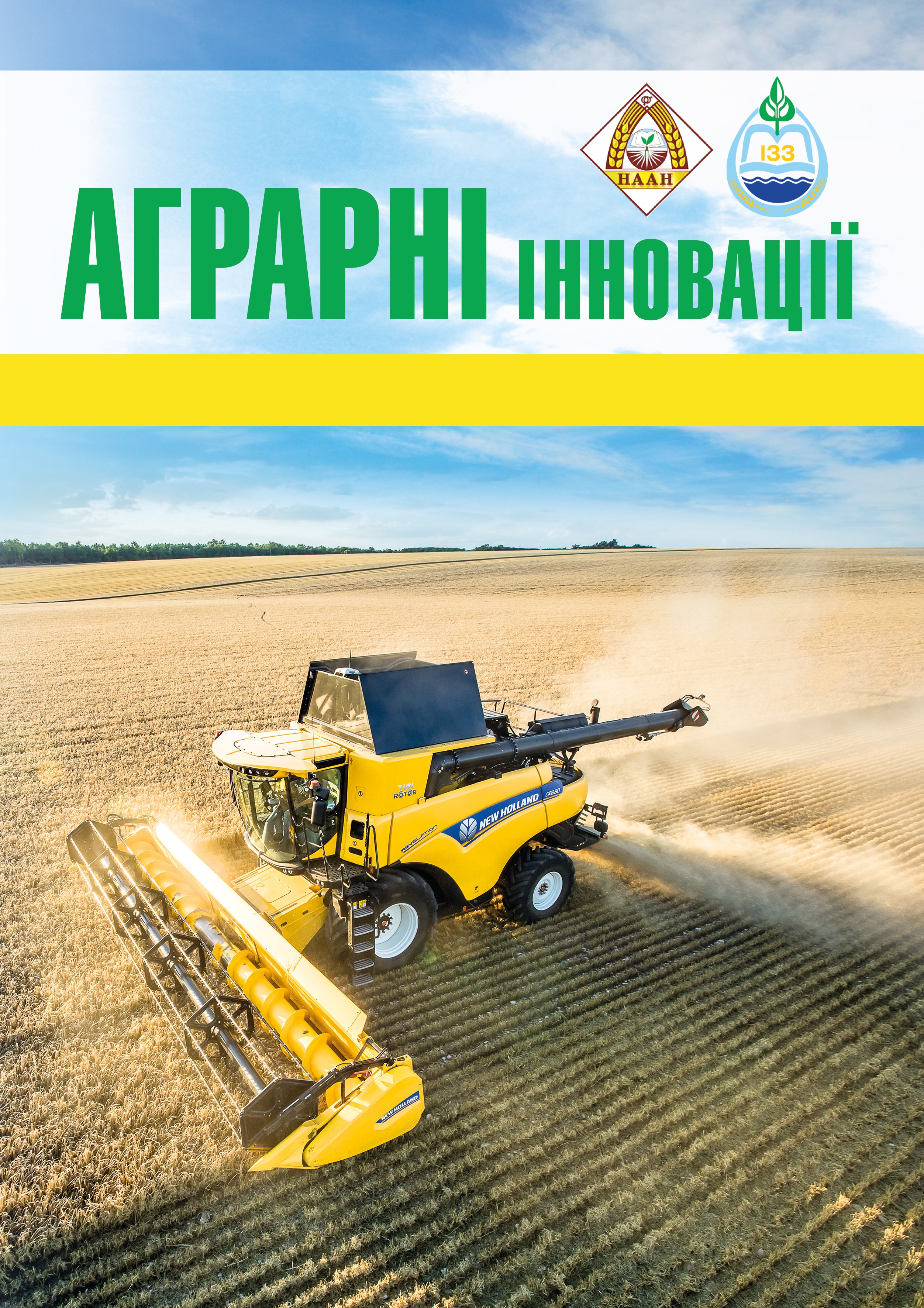VARIABILITY OF SYMBIOTIC CHARACTERS IN ALFALFA GENOTYPES
Abstract
Purpose. Conduct an assessment of the selection mate-rial of alfalfa by the intensity of the nodule-forming process, determine the correlation with nitrogenase activity. Identify the best genotypes for use in practical breeding. Methods. Vegetational, statistical. Results. The samples, the popula-tions of alfalfa by the number of nodules formed and their size were analyzed. The variation in the number of nodules on the plant was established. In selections, in comparison with the initial forms, their amount increases in size larger than 1 mm (medium and large fraction) and the bacterial mass increases. At inoculated plants on 7.6–44.5 % more nodules are formed, in relation to the control. Varieties dif-fer in the number of nodules formed more than 1 mm witha variation from 19.3 to 82.9 %. The placement of nodules on the root system has its own characteristics. Interest for further selection is represented by populations: Unitro, Selection № 3 – Spr. 2, Selection № 5 Кs. – 2007, their plants formed 81.2–99.4 % of nodules with a size of 1–2 mm and 22.7–27.3 % of them were located on the main root. The intensity of the nodule-forming process is determined by the degree of development of the root system, its capacity. With the increase in the power of the root sys-tem, more nodules are formed on them. The level of nitra-genase activity depends on the developmental capacity of the root system, the total number of nodules on alfalfa plants and in sizes of 1–2 mm and > 2 mm. Conclusions. It is established that the size of the symbiotic apparatus depends not only on the number of nodules on the plant, but its mass. The intensity of the nodule-forming process is determined by the capacity of the root system. With the increase in the volume of the root system, as a result, more nodules are formed. High correlation coefficients are established between the level of nitrogenase activ-ity and the thickness of the root system, the total number of nodules in alfalfa plants, including fractions 1–2 mm,2 mm.
References
2. Моргун В.В., Коць С.Я. Роль біологіч-ного азоту в азотному живленні рослин. Вісник НАН України. 2018. № 1. С. 62–73. DOI: https://doi. org/10.15407/visn2018.01.062.
3. Dugald E. Reid, Brett J. Ferguson, Satomi Hayashi, Yu-Hsiang Lin and Peter M. Gresshoff. Molecular mechanisms controlling legume autoregulation of nodulation Annals of Botany. 2011. Vol. 108. No. 5.
P. 789–795. URL: https://www.jstor.org/stable/43578603.
4. Глянько А.К., Ищенко А.А., Филинова Н.В. Бобово ризобиальный симбиоз: некоторые современные зна-ния. Вісник Харківського національного аграрного уні-верситету. Серія «Біологія». 2017. Вип. 3 (42). С. 6–22.
5. Мишустин Е.Н. Микроорганизмы и продуктив-ность земледелия. Москва : Издательство «Наука», 1972. 343 с.
6. Тихонович И.А., Проворов Н.А. Сельско-хозяйственная биология как основа устойчивого агропроизводства: Фундаментальные и прикладные аспекты. Сельскохозяйственная биология. 2011. № 3. С. 3–9.
7. Толкачев Н.З. Биотехнологические аспекты координированной селекции клубеньковых бактерий и бобовых растений. Микробиология и биотехноло-гия ХХІ столетия : матер. Междунар. конф., г. Минск, 22–24 мая 2002 р. Минск, 2002. С. 152–153.
8. Дидович С.В. Координована селекція Mesorhizobium cicuri i Cicer arietinum L. на підви-щення азотфіксувального потенціалу симбіотичної системи. Селекція та генетика бобових культур: сучасні аспекти та перспективи : тези Міжнар. наук. конф., м. Одеса. 23–26 червня 2014 р. Одеса, 2014. С. 241–243.
9. The Rhizobiaceae. Molecular Biology of Model Plant-Associated Bacteria / H.P. Spaink, A. Kondorosi, P. Hooykaas (Eds). Dordrecht : Springer. 566 p. DOI: 10.1007/978-94-011-5060-6.
10. Дидович С.В. Координирование селекции люцерны и клубеньковых бактерий на повыше-ние эффективности симбиотической азотфиксации. Агроекологічний журнал. 2003. № 2. С. 43–46
11. Методика польових і лабораторних досліджень на зрошуваних землях / за ред. Р.А. Вожегової. Херсон, 2014. 285 с.
12. Методические рекомендации для курсов повышения квалификации научных сотрудников по сельскохозяйственной микробиологии / под. ред. Л.М. Доросинского. Ленинград, 1981. С. 11.
13. Колісник А.В., Колісник І.В., Федосієнко Д.В., Коваль Р.І. Економіко-технологічні аспекти біологічної азотфіксації в екологічному рослинництві. Науковий віс-ник НЛТУ України. 2005. Вип. 15.6. С. 488–491.4. Pereira P.A., Miranda B.D., Attewell J.R. et al.Selection for increased nodule number in common bean (Phaseolus vulgaris L.). Plant and Soil. 1993. Vol. 148. Isss. 2. P. 203–209. DOI: 10.1007/BF00012858.






